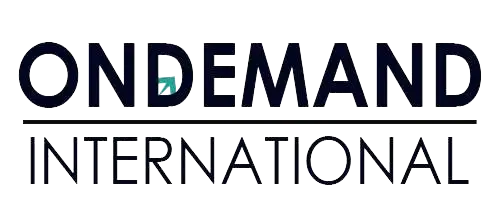To explain in simple language, a cash book is a fiscal diary in which all cash earnings and expenditures, involving bank withdrawals and deposits, are recorded. The entries in the cash book are subsequently recorded in the ledger accounts. If you are wondering what is a cash book and what does it do, read on to find out.
Cash Book Explained
So, what is a cash book?
A cashbook keeps track of both income and expenses. As an audit function measure, the cash flow statement also is frequently compared with the financial records. Cash records are essential for a firm since their proper care and verification of financial records are critical.
Some organizations keep cash books rather than cash receipts & disbursements payments diaries. This is since all monetary receipts are documented in a general ledger. It is similar to the chequing account kept in the logbook. In reality, if a separate cash book is kept, no need to include a cash flow in the journal. A cash flow statement is viewed as a chequing account for all reasons
Cash book also known as a cash journal. A cash book is kept like a ledger account, with receipts entering the debit column and payments moving to the credit column. This journal fulfills two functions. Because all currency records are kept in it as they occur, it works as a diary or journal of ledger accounts.
Because it holds currency and financial records, it also functions as a component of the logbook. When the accounting assistant gets the cash flow book, they finish the double-entry procedure by transferring the purchases to the cash journal’s additional accounting records. Just like a typical accounting system, the cash book amount is put with the financial statement.
So, now when you think about what is a cash book?
You know that a cash journal is amongst the most significant account books in a corporate enterprise, as revealed by the description above. As a result, it is entrusted to the care of a responsible individual who maintains the information in it fully updated.
Types of Cash Books
Now, that you have read the full-fledged description, and know what is a cash book, it’s time for you to hop on to this next section, where you get to know about the several types of cash books.
For financial considerations, there are 4 main types of cash books. Read along and have a look at the different types of cash books. have a wide range of different types of cash books.
- Cash journal with a single column
- Cash journal with two columns
- Cash journal with three columns
- Petty cash journal
Let’s get deeper into the study of different types of cash books:
Single column cash book
A regular cash journal is often referred to as a single-column cash book. It shows income receipts (receipts) present on the left side (debit column) and money transfers on the right side (crediting column). In the situation of single-column cash journals, the bank operations and the benefits offered for purchases will be recorded in distinct subsidiary ledgers. In certain businesses, cash books are revised frequently. A cash journal’s most striking characteristic is that it can’t have an outstanding balance. The debit amount should always be displayed.
Double-column cash journal
It has an extra section for discount offers. As a result, in this cash book which is also referred to as a two-column cash book, collecting payments and debits are documented on one side, while coupons earned and given are documented in the other column.
Because the voucher is a notional account, the reduction given is recorded on the debit column of the cash journal, whereas the reduction received is recorded on the credit column. The two columns are matched at the financial year-end, and the ending amounts are shifted accordingly.
Triple column cash book
The triple columns in a tri-column cash journal are equal to the corresponding double columns in a two-column cash journal. The extra column, on the contrary, is for financial transactions. Because most businesses now deal in checks as a result of improvements in the financial sector, the inclusion of a deposit entry in a cash journal aids in the accurate comprehension of payments.
Petty cash book
As the title implies, this cash journal is used for extremely minor payments that occur within a company. These transactions might happen multiple times every day and are repetitious in nature, putting an unnecessary strain on the main cash book. As a result, it is kept in its own folder. Daily stationery, postage, and meal bills are among some instances of such trades.
Features of a Cash Book
Till now, you have gone through sections where you understood what is a cash book, a detailed description, and types of cash books. Now is the time for you to get familiar with the features of cash books.
In practice, a cash book is kept by a commercial organization to keep a record of all financial transactions. There are several features of cash books, and they are mentioned below:
- The fact that the cash journal solely tracks cash and financial transactions is a significant aspect. It doesn’t keep track of credit purchases.
- Cash book’s key characteristic is that it keeps track of payments in sequential sequence.
- There are 2 aspects to it. Financial receipts are recorded on the debit column, while cash payments are recorded on the credit column.
- The beginning or starting amount of a new cash journal is one of its most important properties. The initial debit value of money is displayed on the debit column of a cash section, while the initial credit value of cash is displayed on the credit column of the banking column. The deficit balance is always displayed in the cash section.
- Transfers in cash couldn’t ever exceed receipts in cash. That results in most cash books showing a negative balance. The amount in the cash journal is negative if the overall sum of the debit column (receipts) equals the overall number of the credit column (payments).
- A cash journal is named so since the financial or bank operations are documented in sequential sequence when they are occurring. Its layout is comparable with the ledger, and the amount is drawn out similarly to the ledgers. As a result, the cash journal serves as both a book and a ledger.
- Another key characteristic of the cash journal is that the cash records are kept there and then transferred straight to the appropriate General ledger.
- A cash book’s balance is simply moved to the Trial Balance. As a result, there is no need to keep any cash accounts in the ledger logbook.
These were some of the striking features of cash books.
- The benefits of using a cash book are as follows:
- It reduces workload, which assists in saving time and effort.
- For the ease of the accounting staff, it assists in establishing a consistent statement of transactions organized by date.
- It assists in the identification of monetary scams within the corporation.
- It is useful in spotting errors and provides simple cash authentication comparing the amount in the cash book with the money available on hand.
Conclusion
The target was to make you all understand what is a cash book, how it works, its types, and its features. Now that we have reached the end of this article, I hope all the readers know everything about a cash book.
It is safe to say that a cash book is advantageous since it allows for quick cash confirmation by comparing the amount to the real cash you have on you, which aids in the detection of entry errors.
FAQ’s
All cash transactions including, earnings and expenditures, involving bank withdrawals and deposits are kept.
There are four different kinds of cashbooks available, and they are Petty cash book, single column, double column, as well as the triple column.
A cashbook’s main function is to keep track of cash transactions that take place within a corporate organization. It makes it simple to calculate cash balances at any moment, by enabling managers and corporate accountants to successfully organize their cash by facilitating proper cash management.
Each time your company obtains money, you register it on the debit side. The payments and expenditures made by your company should be entered on the credit side.

